One of the remarkable things about Bryan Talbot is how recognizable his work is, even though he embraces different styles, genres, and types of storytelling. What doesn’t change is his attention to detail, his depth of research, and his sly wit. The tome of Grandville Integral combines all five full-length graphic novels (so far) in the Grandville series. In addition, there are annotations about the historic, artistic, literary, comics, and other cultural influences or references that can be found throughout. It is beautifully put together, weighs more than an old-school library dictionary, and will look great in a place of honor on a strong shelf.
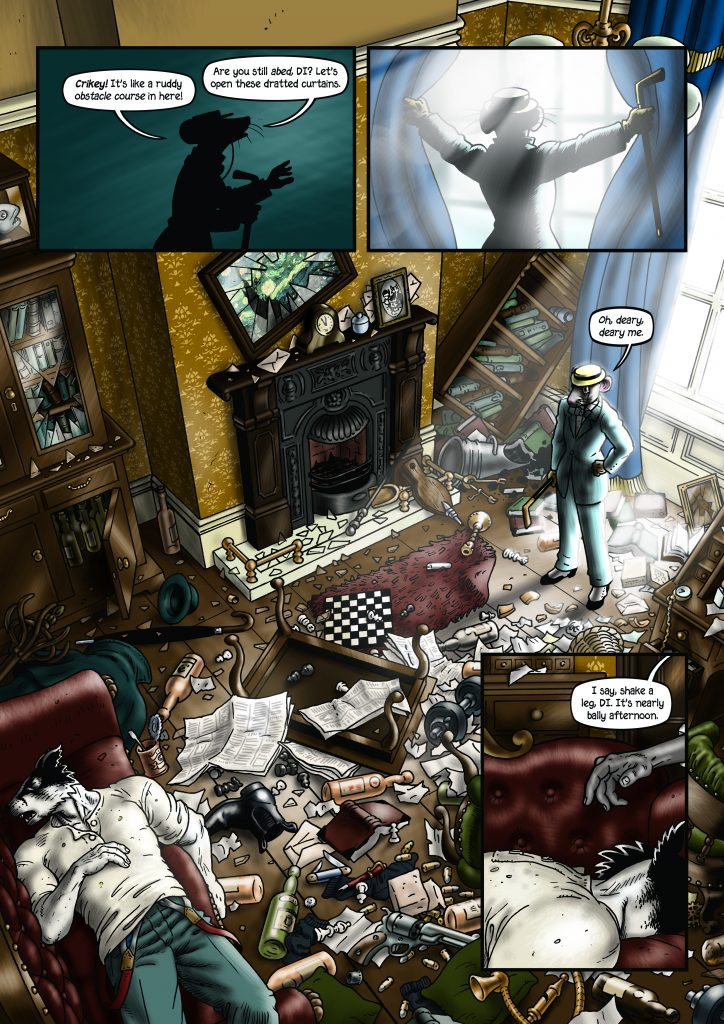
Set in a steampunk Belle Epoch, each book is subtitled, “A Detective Inspector LeBrock of Scotland Yard Scientific-Romance Thriller.” Using the archaic British term “Scientific-Romance” for what would now be branded as science fiction immediately sets the tone. The fact that it was used to describe the work of both H.G. Wells and Sir Arthur Conan Doyle gives a clue to the level of exuberant adventure and the depth of mystery in each tale.
In this alternate reality, there are many differences from ours. Napoleon won his wars and France ruled all of Europe and much of the world for two hundred years. After a bitter uprising, the Socialist Republic of Britain has broken away from French rule a mere 23 years before the tales begin.
The characters are anthropomorphic creatures from all across the animal realm. Talbot uses this to great effect to emphasize elements of character with the iconic symbolism often associated with various animals. LeBrock is a powerful and tenacious badger. His boss is a no-nonsense, bespectacled ram. The Napoleonic line are lions. The man about to become Prime Minister is a bulldog. There are gangland birds and lizards and even a would-be messianic cult leader who is a unicorn.
There is also a seemingly slowly evolving species, a perpetual servant class, called dough-faces – though they prefer the term human – that live along-side the dominant species. Talbot uses their current struggle for equal rights and the veiled history of the doughfaces to examine themes of racism and classism.
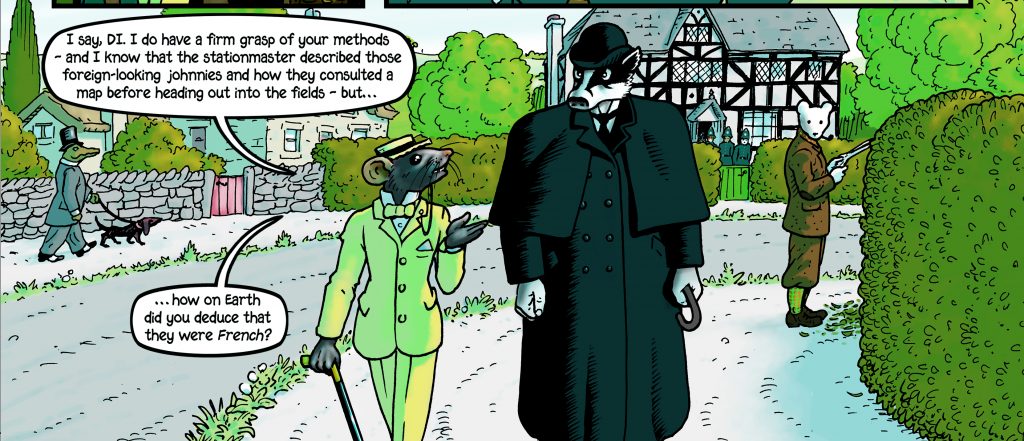
Grandville – the first book in the series – introduces Detective Inspector Archie LeBrock and his adjunct Roderick Ratzi (those familiar with Talbot’s body of work will recognize his well-researched fondness for rats from his series The Tale of One Bad Rat). Here, LeBrock and Ratzi are called upon to confirm the apparent suicide of a diplomat who recently returned from Grandville (aka Paris). LeBrock sees that it is in fact a murder and they are off to Grandville to investigate. Of course, their investigation takes them into the worlds of arms dealers, politicians, opium dens, neo-robotics inventors, and the theatre. This is where LeBrock becomes involved with the ill-fated Sarah, the reigning Queen of the boards. They discover a conspiracy that runs into the highest ranks, with consequences that leave LeBrock devastated.
Grandville: Mon Amour picks up a month after book one leaves off. The bereaved LeBrock has been on a bender since returning from Grandville. Meanwhile, notorious criminal Mad Dog Mastock has escaped on the way to his execution. LeBrock discovers that his most incompetent colleague has been assigned to the case. An altercation with his boss over this gets him booted. But nothing is going to keep this badger from capturing Mad Dog. LeBrock and Ratzi follow the clues back to Grandville. They race against the clock as this Jack-the-ripper style miscreant stalks Parisian prostitutes who have more than their profession in common. It turns out that this conspiracy stems from the higher-ups in LeBrock’s homeland. LeBrock thinks he’s seen a ghost when he meets Billie, a friend and co-worker of several of the murdered women. LeBrock must keep Billie from suffering the same fate as Sarah, and see to it that justice is delivered to Mastock and those who have been pulling Mastock’s strings.
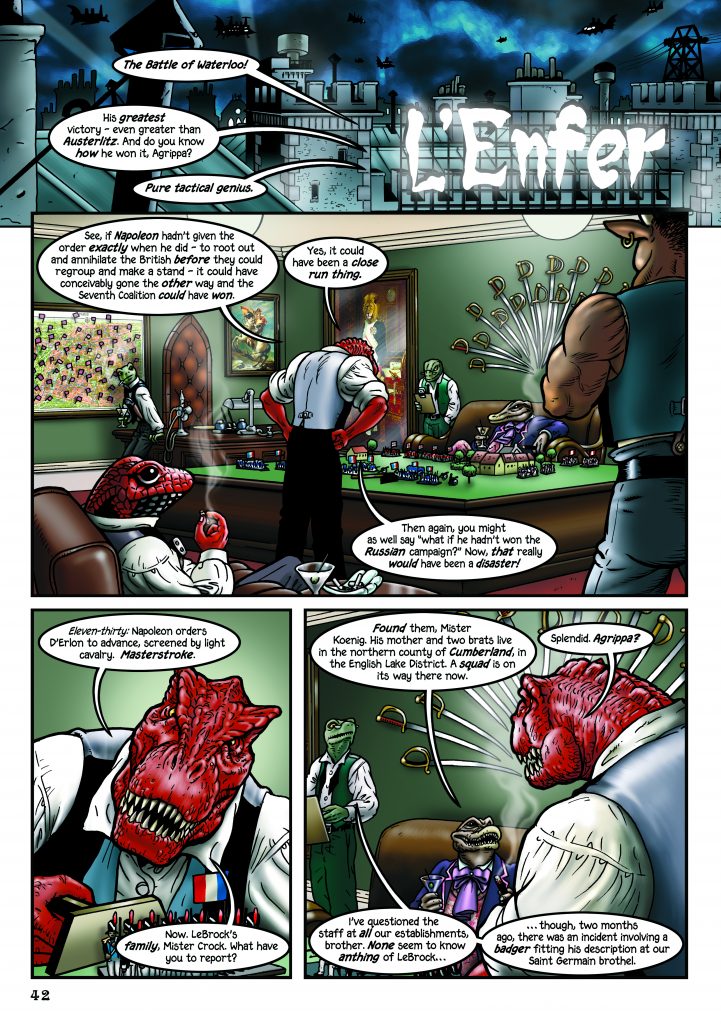
In Grandville: Bette Noire, a French detective recruits LeBrock to help solve the murder of a popular artist. LeBrock is reunited with Billie and once again is thrust into an investigation that reaches into the highest level of society. Political intrigue, as well as social unrest, are fomented by a wealthy industrialist who is hell-bent on preventing the newly formed socialist government of France from cementing its power. Billie surprises with skills, knowledge, and connections that LeBrock didn’t quite expect.
Grandville: Noel takes place the week before Christmas and Bunty, the niece of one of LeBrock’s dearest friends, has gone missing. The trail leads him back to Grandville, this time flying solo as Ratzi is unable to get away. The girl has been seduced into a religious cult led by a unicorn calling himself Apollo. On her trail, LeBrock joins forces with a human Pinkerton detective who has followed Apollo from America where he is wanted for the suicide-pact deaths of hundreds of followers. Meanwhile, Apollo is making a play for an earthlier sort of power by uniting with a Nazi-like political party using a combination of his true animal magnetism and a platform of anti-human rhetoric that will look familiar to any with even a passing knowledge of World War II or current right wing hate mongering. In an effort to get Bunty out of the compound, Billie agrees to go undercover. A handful of other familiar foes and frenemies make appearances as well. In the end, Billie has another surprise for LeBrock.
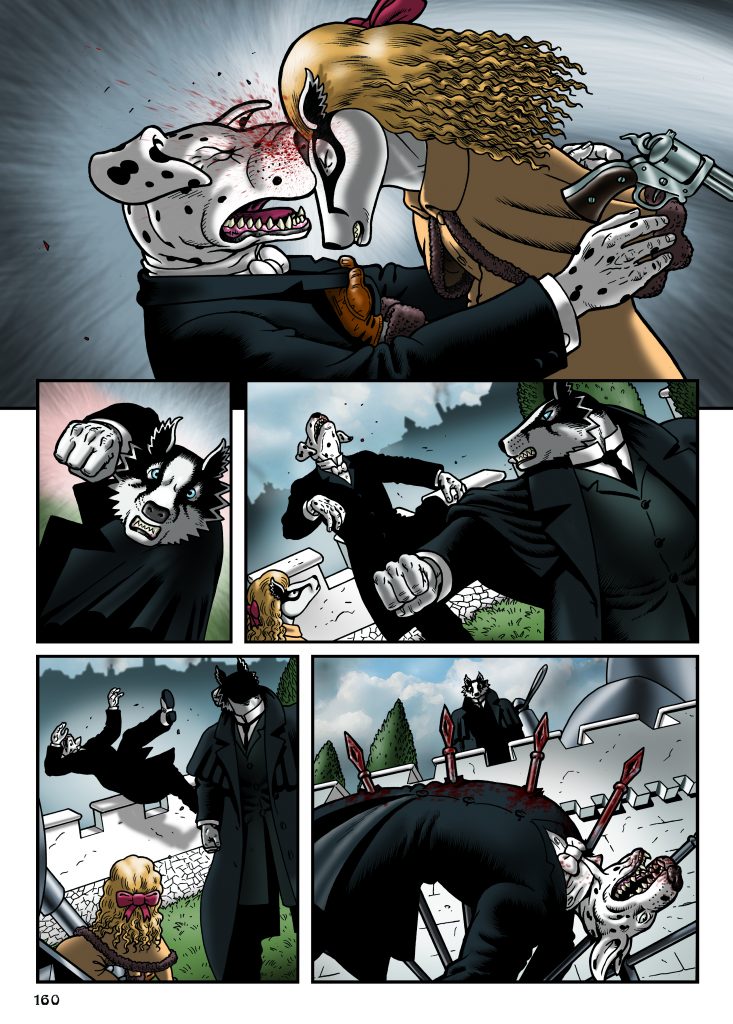
Grandville: Force Majeure features the gangs of Grandville who have been forcibly subsumed by the ruthless, cold-blooded, criminal mastermind Tiberius Koenig. In Noel, he is a background figure, but in Force Majeure, he is coming to consolidate the criminal underworld of London and avenge his brother’s fatal encounter with LeBrock. This tale gives more insight into LeBrock’s training as a detective, Billie’s multifaceted past, and is the strongest homage to Sherlock Holmes of the five books. LeBrock meets his Moriarty, and the game is certainly afoot.
At his core LeBrock is a working-class bloke with a keen mind, meticulous training, and the tenacity of a badger. Watching him struggle with upper-crust etiquette can be entertaining, but his struggle for respect and recognition is very real.
Everyone plays for keeps. Don’t let the lovely art nouveau settings of this version of the Belle Epoch fool you. These are hard-boiled detective tales, a world of hard knocks. Between grisly murders, knuckle-assisted interrogations, and sinister conspiracies at every level of society, Talbot uses the action-adventure format to comment on racism, fascism, classism, and the British sense of humor.
Each book has a different set of power brokers willing to manipulate and sacrifice the masses in order to retain or increase their own power. The machinations of “patriots,” zealots, and the wealthy elite are brought under the microscope. National heroes and personal heroes are called into question.
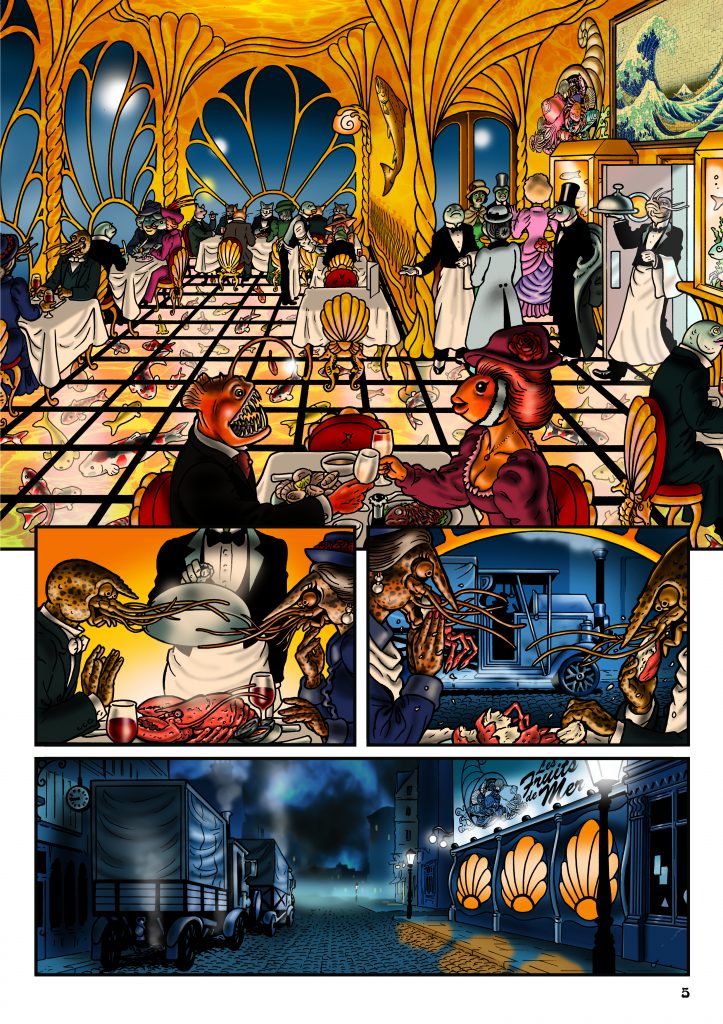
Bette Noir has a particularly interesting take on art and how it can be used or perverted by those wishing to hold sway over a populous. Talbot also explores the tensions between representative arts and more modern art, and how governments and other institutions can use and be used by the media. The annotations on this are particularly interesting.
Talbot has a history of creating strong, intelligent girls and women who lead, overcome, and often triumph. They are never simply window-dressing to manipulate male main characters. Generally, his female characters are well-developed with depth and ingenuity. This is no less true here; however, women in LeBrock’s life seem to have often been pawns to plot. Hurting them to hurt LeBrock has been a tool of more than one of his enemies. I recognize this as a common complaint about the love interests of heroes across the history of comics. It is also unusual for Talbot. Having said that, it seems to be a trend that is becoming part of LeBrock’s past. As the stories progress, more of the women close to him come into their own power. This is a minor grumble, and one that gets even smaller when stacked up against all of the amazing things there are to recommend this collected book or the individual volumes that comprise it.
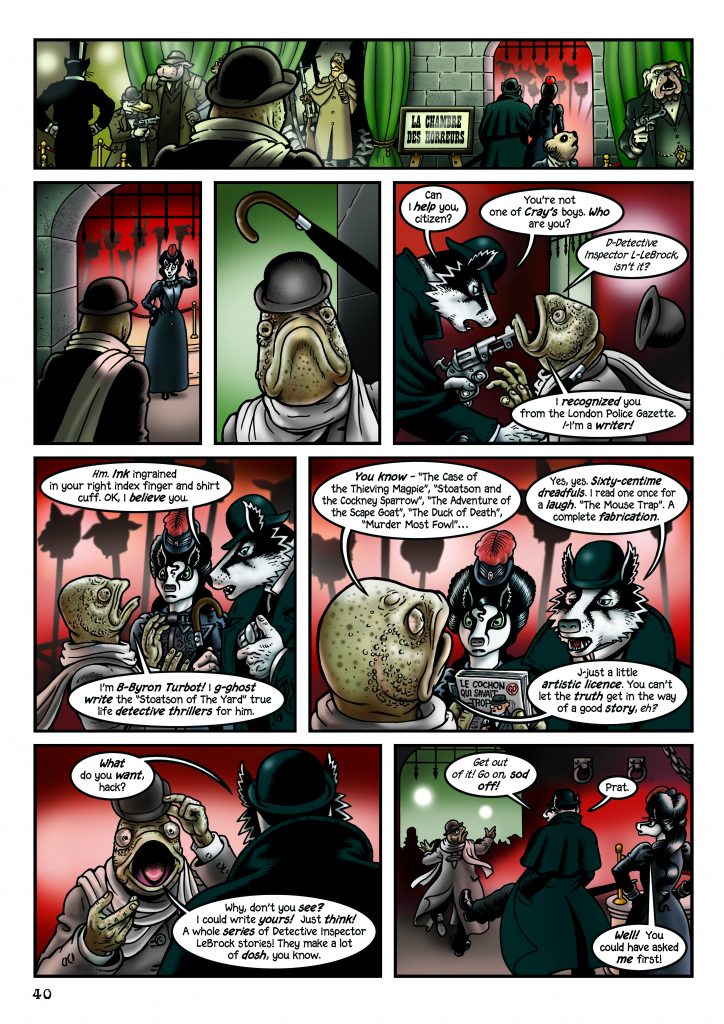
Talbot’s art is at its detailed, well-researched best. Panel after panel is filled with visual references to comics, art history, and actual history. There are visual as well as word puns. There are Easter eggs on every page (from Hello Kitty to Scotland Yard’s own steampunk version of James Bond’s Q, to a self-referential character, Byron Turbot, who offers to write pulp fiction tales based on LeBrock’s adventures). Annotations begin on page 571 and add an extra 35 pages. The title itself and the use of zoomorphic characters is an homage to the great French illustrator, caricaturist, political cartoonist, and social satirist Jean Ignace Isidore Gerard Grandville (1803-1947) better known as J.J. Grandville. Talbot is effusive about the works that he pays homage to in the series. His affection is clear, and he does justice to those influences, at the same time creating a rich new world that will someday be counted in another artist’s list of favorite inspirations.
SOLRAD is made possible by the generous donations of readers like you. Support our Patreon campaign, or make a tax-deductible donation to our publisher, Fieldmouse Press, today.
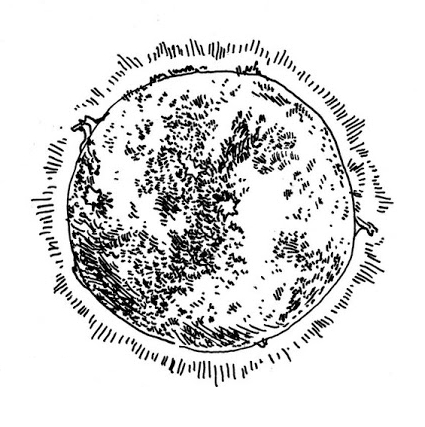
Leave a Reply